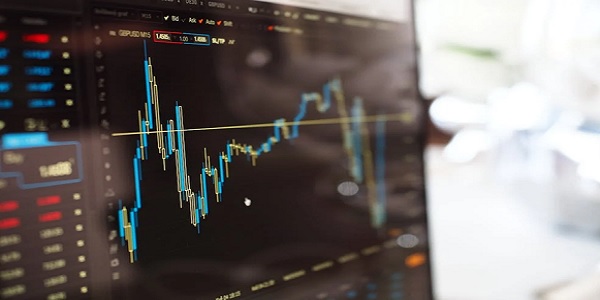#AD
Forex trading, also known as foreign exchange trading, is the act of buying and selling currencies with the aim of making a profit. It is the biggest financial market in the world, with an average daily trading volume of over $5 trillion. But like any other type of investment, there are risks involved and strategies to be mastered for success.
Page Contents
Understanding the Basics of Forex Trading
Forex trading has become increasingly popular in recent years, with more and more people looking to profit from the fluctuations in exchange rates. However, it can be a complex and often volatile market, and it is important to have a solid understanding of the basics before diving in.
What is Forex Trading?
Forex trading involves exchanging one currency for another with the aim of profiting from the difference in exchange rates. This can be done through a variety of means, including spot transactions, forwards, options, and exchange-traded funds (ETFs). The forex market is decentralized and operates 24 hours a day, five days a week, making it one of the most accessible markets for traders around the world.

Major Currency Pairs and Their Characteristics
There are seven major currency pairs in forex trading, and they all have different characteristics. These pairs include:
- EUR/USD
- USD/JPY
- GBP/USD
- USD/CHF
- AUD/USD
- USD/CAD
- NZD/USD
Each currency pair has its own unique characteristics, such as volatility, liquidity, and trading volume. Understanding these characteristics is crucial when developing a trading strategy, as it can help traders to identify potential opportunities and manage risk.
The Role of Forex Brokers
Forex brokers serve as intermediaries between traders and the forex market. They provide access to trading platforms, educational resources, and often offer leverage to their clients. Choosing the right forex broker is essential to success in forex trading, as it can impact everything from the execution of trades to the fees and commissions charged.
When selecting a forex broker, it is important to consider factors such as regulation, reputation, and customer support. Traders should also be aware of the risks involved in forex trading, such as the potential for significant losses due to leverage and market volatility.
Overall, forex trading can be a challenging but rewarding market for those who are willing to put in the time and effort to develop a solid trading strategy and stay up-to-date on market developments.
Developing a Solid Forex Trading Strategy
Forex trading is a complex and dynamic market that requires a solid trading strategy to be successful. In this article, we will explore the different components of a solid forex trading strategy.
Immediate Connect is a revolutionary platform designed specifically for forex traders, offering a wide range of tools and features to enhance trading success. With immediateconnectapp.org, traders gain access to real-time market data, advanced analysis tools, and a user-friendly interface that streamlines the forex trading experience.
Whether you are a beginner or an experienced trader, Immediate Connect provides the resources you need to stay informed, make informed decisions, and maximize your potential in the world of forex transactions.
Fundamental Analysis vs. Technical Analysis
There are two main types of analysis used in forex trading: fundamental and technical. Fundamental analysis involves analyzing economic indicators, such as interest rates and GDP, to make trading decisions. This type of analysis is often used by long-term traders who are looking to make trades based on the overall health of a country’s economy.
Technical analysis, on the other hand, involves analyzing charts and patterns to identify trends and make trading decisions. This type of analysis is often used by short-term traders who are looking to make trades based on market movements.
Both types of analysis can be effective, and many traders use a combination of the two. It’s important to understand the strengths and weaknesses of each type of analysis and to use them in a way that complements your trading style.
Risk Management Techniques
Risk management is an essential aspect of forex trading. Traders must have a plan for managing their risk, which may involve setting stop-loss orders, limiting leverage, and diversifying their portfolio. Successful traders understand that minimizing losses is just as important as maximizing profits.
One popular risk management technique is to set a stop-loss order, which is an order to sell a currency pair when it reaches a certain price. This helps to limit potential losses and can be a useful tool for traders who are just starting out.
Another important risk management technique is to limit leverage. Leverage is a tool that allows traders to control larger positions with a smaller amount of capital. While leverage can increase potential profits, it can also increase potential losses. It’s important to use leverage wisely and to only trade with money that you can afford to lose.

Creating a Trading Plan
Developing a trading plan involves setting specific goals, determining risk tolerance, and outlining a strategy for entering and exiting trades. A solid trading plan should be tailored to the individual trader’s needs and goals, and should be reviewed and updated regularly.
When creating a trading plan, it’s important to set realistic goals. This may involve setting a target for the amount of profit you want to make each month, or it may involve setting a target for the number of trades you want to make each week. Whatever your goals may be, it’s important to be realistic and to have a plan in place for achieving them.
Another important aspect of a trading plan is determining your risk tolerance. This involves understanding how much risk you are willing to take on in each trade. Some traders are comfortable taking on higher levels of risk, while others prefer to take a more conservative approach.
Finally, it’s important to have a strategy in place for entering and exiting trades. This may involve using technical indicators to identify entry and exit points, or it may involve using a more fundamental approach based on economic indicators.
In conclusion, developing a solid forex trading strategy requires a combination of fundamental and technical analysis, effective risk management techniques, and a well-defined trading plan. By taking the time to develop a solid strategy, traders can increase their chances of success in the dynamic and exciting world of forex trading.
Essential Forex Trading Tools and Platforms
Choosing the Right Trading Platform
Choosing the right trading platform is crucial to success in forex trading. Factors to consider when choosing a platform include ease of use, reliability, and available tools and resources. Some popular trading platforms include MetaTrader 4, cTrader, and TradingView.
Utilizing Forex Charts and Indicators
Forex charts and indicators provide valuable information about market trends and trading opportunities. Traders should learn how to read and interpret charts and use indicators, such as moving averages and Bollinger Bands, to identify signals and make informed trading decisions.
Leveraging Economic Calendars and News Sources
Economic calendars and news sources provide up-to-date information on market events, such as interest rate announcements and political developments, that can impact currency prices. Traders should stay informed of these events and use them to guide their trading decisions.
Tips for Successful Forex Trading
Mastering the Art of Patience and Discipline
Successful forex traders understand the importance of patience and discipline. They do not let fear or greed guide their trading decisions, and they stick to their trading plan even during volatile market conditions.
Continuously Educating Yourself on Market Trends
The forex market is constantly changing, and staying up-to-date on market trends and events is crucial to success. Traders should continuously educate themselves through books, courses, and forums.
Adapting to Changing Market Conditions
The ability to adapt to changing market conditions is a key trait of successful forex traders. They are able to identify when their strategy is no longer effective and adjust their approach accordingly.
By developing a solid trading strategy, utilizing the right tools and platforms, and mastering the art of patience and discipline, traders can navigate the forex market with confidence and increase their chances of success. Continuously educating yourself on market trends and adapting to changing conditions are also essential to long-term success in forex trading.
****
Disclaimer:The content provided in the article “Exploring the World of Forex Transactions: Strategies and Tips for Success” is for informational purposes only. It should not be construed as financial, investment, or trading advice. Forex trading involves substantial risks, including the potential loss of capital and is not suitable for everyone. Readers are strongly advised to conduct their own research and consult with a certified financial advisor before making any trading decisions. The views, information, or opinions expressed within the article are solely those of the author(s) and do not necessarily represent those of www.taxguru.in or its affiliates. Immediate Connect, MetaTrader 4, cTrader, and TradingView are mentioned for illustrative purposes and www.taxguru.in does not endorse or have any affiliation with them, unless explicitly stated. The website www.taxguru.in, its management, or associates will not be held liable for any losses, damages, or grievances that may arise from the use or reliance on this article’s content or the resources mentioned.




